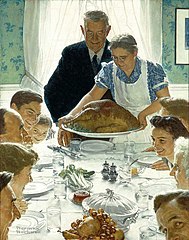
Thanksgiving, a national holiday embedded in American mythology, has changed over the years from an emblem of American history and unity to a day that includes eating, shopping, and watching televised football games and parades. Below are a few factoids of Thanksgivings past.
When I was a child, billboards advertising a certain brand of turkey popularized the picture on the left. Norman Rockwell’s rendition of a family Thanksgiving table was called Freedom From Want, and was one of four pictures depicting the Four Freedoms Americans fought for during World War II.
This idealized traditional Thanksgiving meal bore no resemblance to the so-called First Thanksgiving celebrated in Plymouth in 1621.
A Pilgrim Thanksgiving
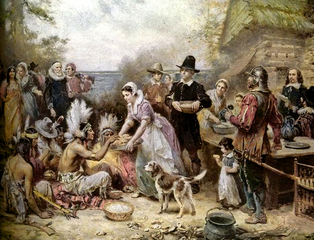
Pilgrims and other New Englanders celebrated many days of thanksgiving. These were days of prayer thanking God for military victories, or a good harvest. Our enshrined Thanksgiving was a celebration survival that took place over three days some time between late September and mid-November 1621. About 52 settlers with major assistance from the Pokanoket Wampanoag people led by Ousmequin, survived the first year. Survivors included 22 men, four married women, and about 25 children and teens.
In preparation for the celebration, several Pilgrims went “fowling” to secure geese and ducks for the feast. The meal probably also included fish, eels, shellfish, and vegetables from Pilgrim gardens, including cabbages, carrots, cucumbers, leeks, lettuce, parsnips, pumpkins, and cranberries without sugar. Unexpectedly, about 90 Wampanoag made a surprise visit, contributed four or five deer, and joined the feast. This idealized feast of plenty and harmony became part of our American myth.
An annual official celebration of Thanksgiving was slow to become a national holiday. After 1798, Congress left the holiday up to individual states. Some objected that the day was a religious observance that should not be put to political use. Southern states saw the custom as specific to New England and declined to participate.
Sarah Josepha Hale’s Thanksgiving Campaign
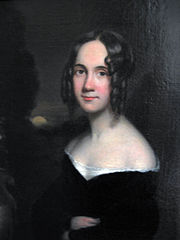
In the early 19th century sectional tensions between northern and southern states increased. In an effort to encourage national unity, Sarah Josepha Hale, editor of the popular Godey’s Lady’s Book began a campaign for a national Thanksgiving Day. Though she didn’t specifically promote feasting, a chapter in her 1827 novel Northwood; or, A Tale of New England described a Thanksgiving dinner. Highlighted foods included roasted turkey placed at the head of the table; and well did it become its lordly station, sending forth the rich odour of its savoury stuffing. For dessert there was pumpkin pie which she described as an indispensable part of a good and true Yankee Thanksgiving. Thus did two “traditional” foods gain their place on traditional Thanksgiving tables.
In 1863, during the American civil war, President Lincoln proclaimed a national day of Thanksgiving that would be observed on Thursday, November 26. Succeeding presidents continued the tradition of declaring the last Thursday in November to be Thanksgiving.
Thanksgiving Football 🏉 🏉 🏉
American Thanksgiving traditions solidified in the late 19th century. The first of these to take root was Thanksgiving College Football Games. On November 30, 1876 Yale and Princeton faced off on a field in Hoboken NJ. Yale defeated their rival 2-0 while fewer than 1000 fans watched.
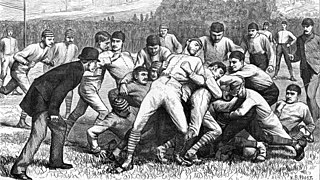
In the late 19th century, football resembled rugby more than today’s game. There were group tackles and flying wedges among players wearing little or no head protection.
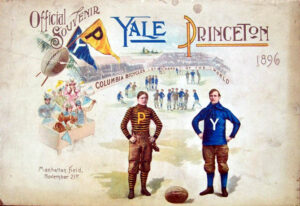
In 1880 when the venue shifted to Manhattan’s Polo Grounds, crowds began to grow. Ten thousand fans watched the game in 1881. Vendors sold souvenirs. Scalpers sold tickets that cost $1 for $5. Gamblers placed bets.
Football fans formed an unofficial parade as they traveled from Fifth Avenue hotels to the Polo Grounds where the games were played. In 1893, more than 50,000 fans attended the annual game.
Thanksgiving Parades

The first Thanksgiving Day Parade was in Philadelphia when Gimbel’s Department Store produced a parade with fifteen people and Santa Claus at the end.
Four years later, Macy’s employees organized Macy’s Christmas Parade with animals from the Central Park Zoo. More than 25,000 people attended the parade. The first balloon appeared in 1927 featuring Felix the Cat. Floats were introduced in 1968.
Green Bean Casserole

As ubiquitous on Thanksgiving menus as turkey and pumpkin pie, green bean casserole is worth a mention if only because it was invented in 1955 as a way for Campbell’s to sell more cream of mushroom soup. The recipe became a midwestern staple and is so popular that 40% of Campbell’s Cream of Mushroom Soup sales are at Thanksgiving.
🦃 🦃 🦃
Illustrations
Freedom From Want by Norman Rockwell.
First Thanksgiving by Jean Leon Jerome Ferris.
Sarah Josepha Hale by James Reid Lambdin.
1879 Yale-Princeton Game. Wood engraving from Harper’s Weekly.
Yale v. Princeton. 1896.
Otto Messmer’s Little Black Cat by Raoul Barre.
Green Bean Casserole by Rick Kimpel.
Sarah Josepha Hale, The Little Lady From NH Who Started Thanksgiving. New England Historical Society.
Christopher Curley. “How Thanksgiving Dinner Has Changed Over the Years.” Insider. Nov. 27, 2019.
Christopher Klein. “How The First Thanksgiving College Football Game Kicked Off a Holiday Tradition.” History. Nov. 19, 2021.
Sarah Pruitt. “Colonists at the First Thanksgiving Were Mostly Men Because Women Had Perished.” History. Aug. 9, 2023.

Sandra Wagner-Wright holds the doctoral degree in history and taught women’s and global history at the University of Hawai`i. Sandra travels for her research, most recently to Salem, Massachusetts, the setting of her new Salem Stories series. She also enjoys traveling for new experiences. Recent trips include Antarctica and a river cruise on the Rhine from Amsterdam to Basel.
Sandra particularly likes writing about strong women who make a difference. She lives in Hilo, Hawai`i with her family and writes a blog relating to history, travel, and the idiosyncrasies of life.

